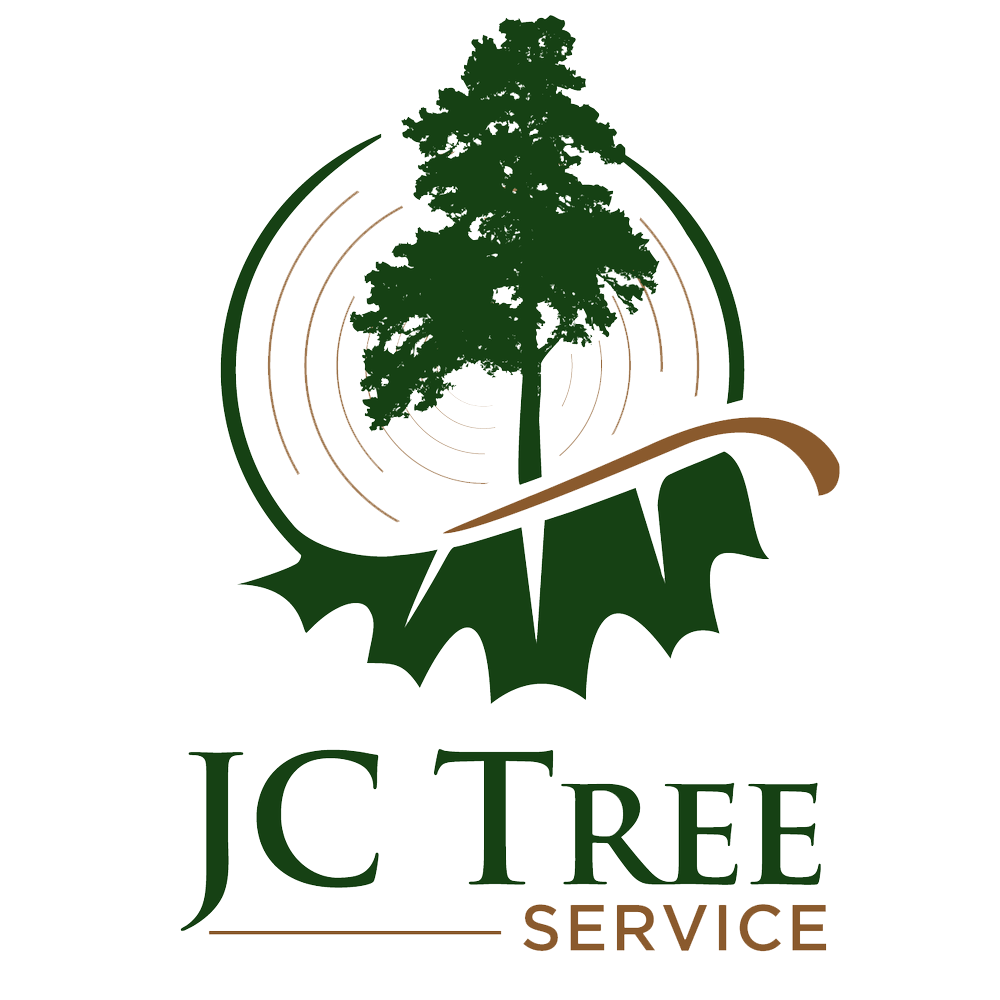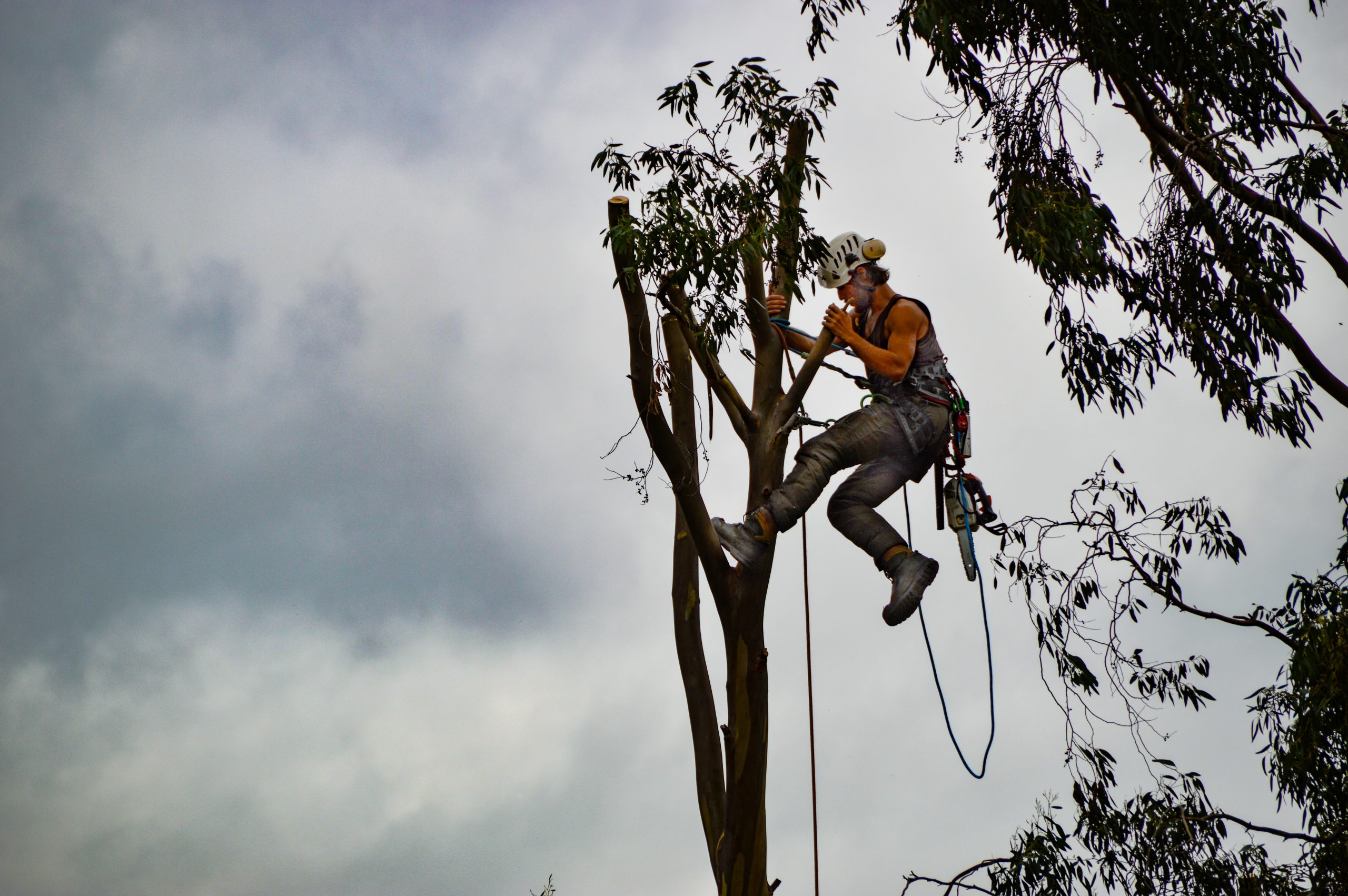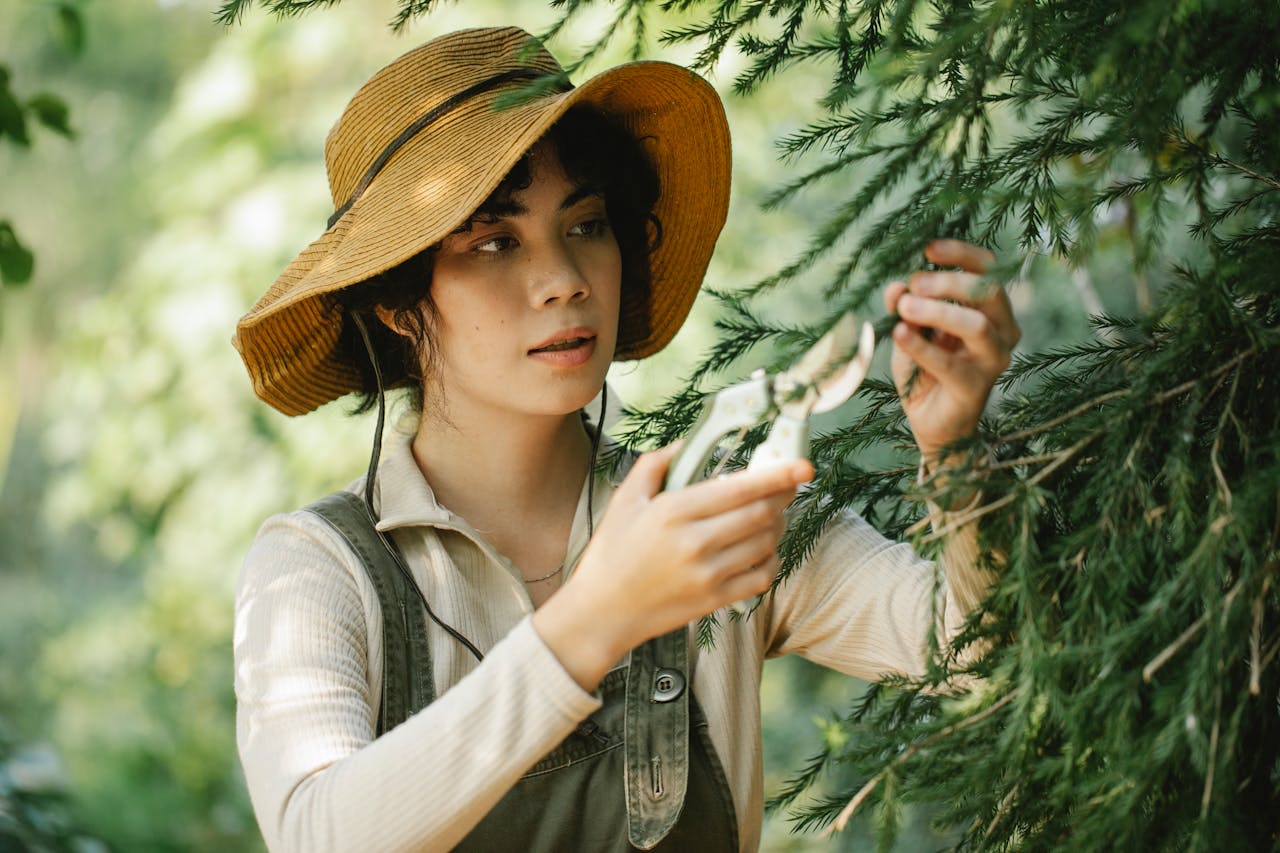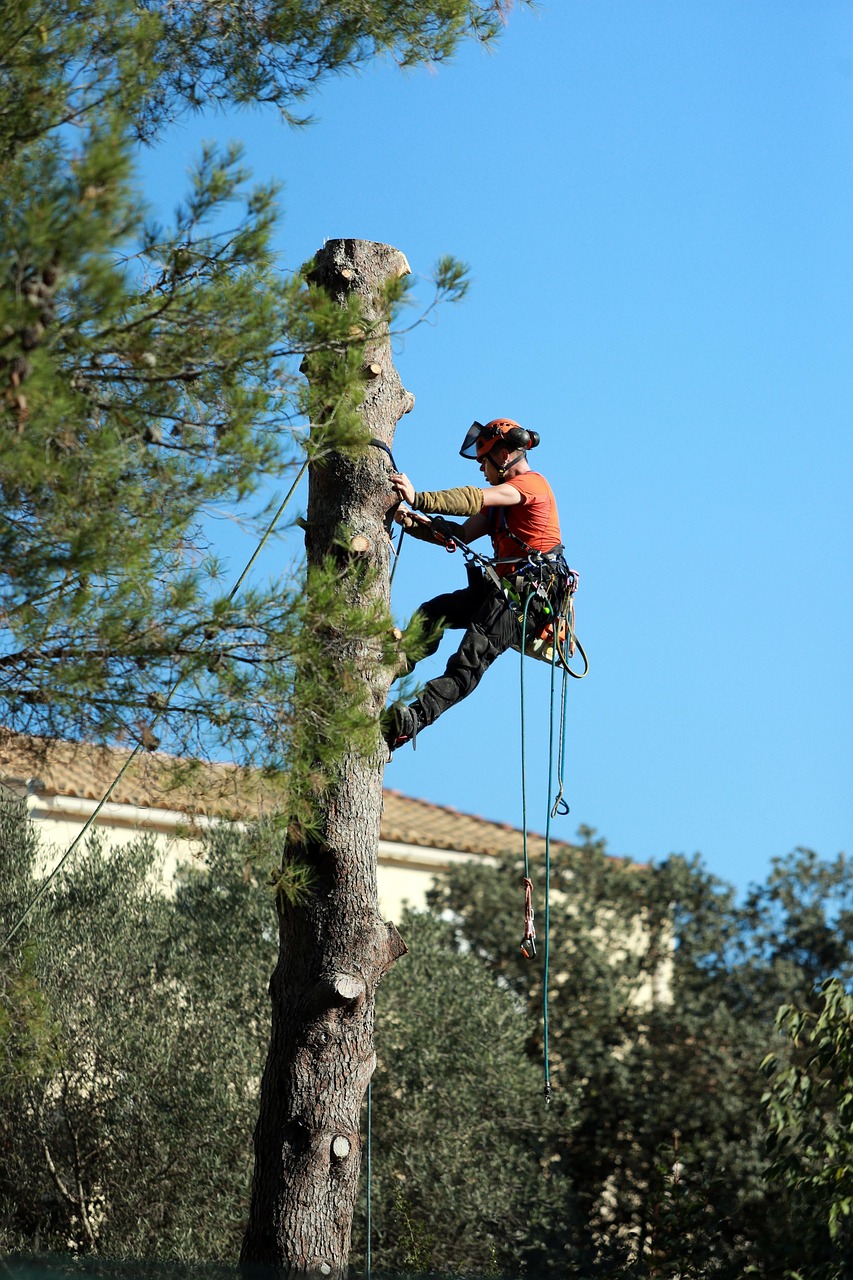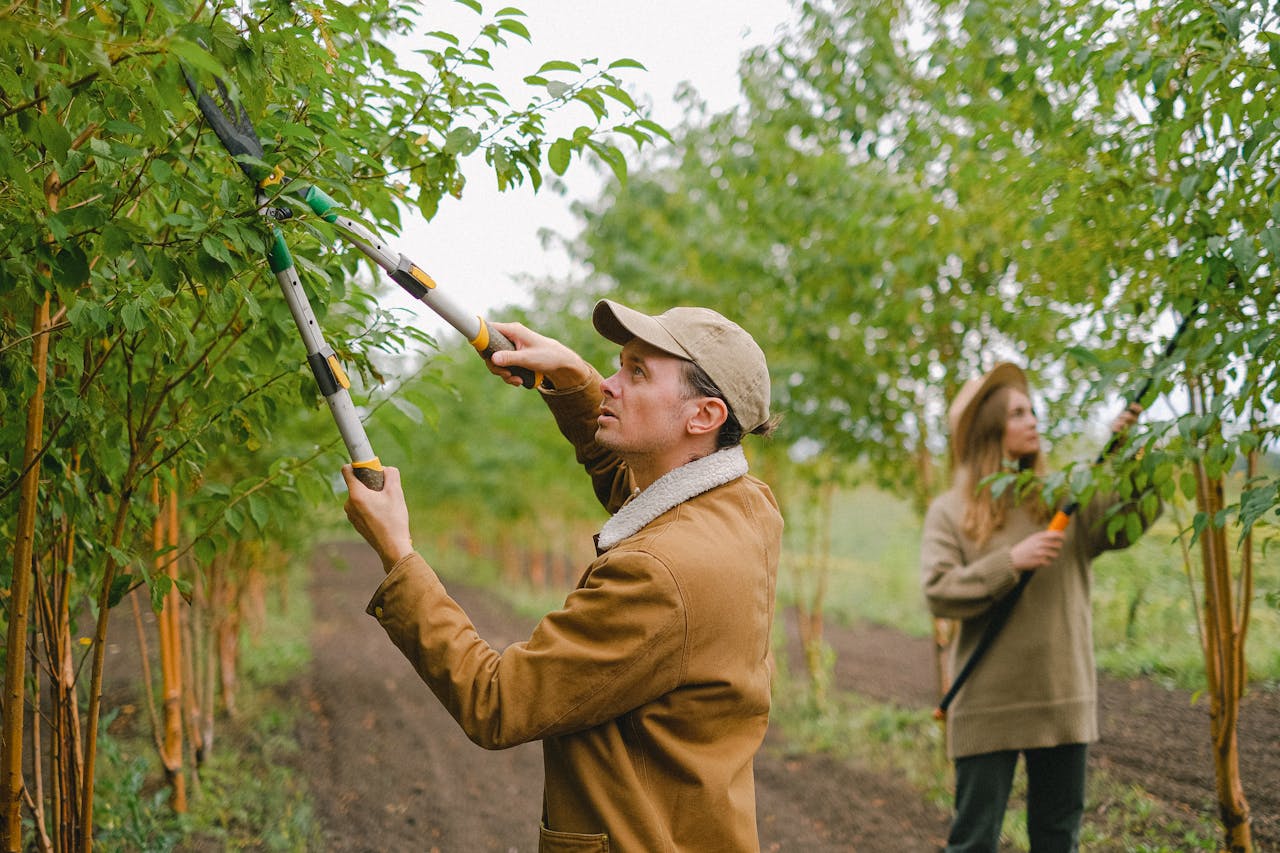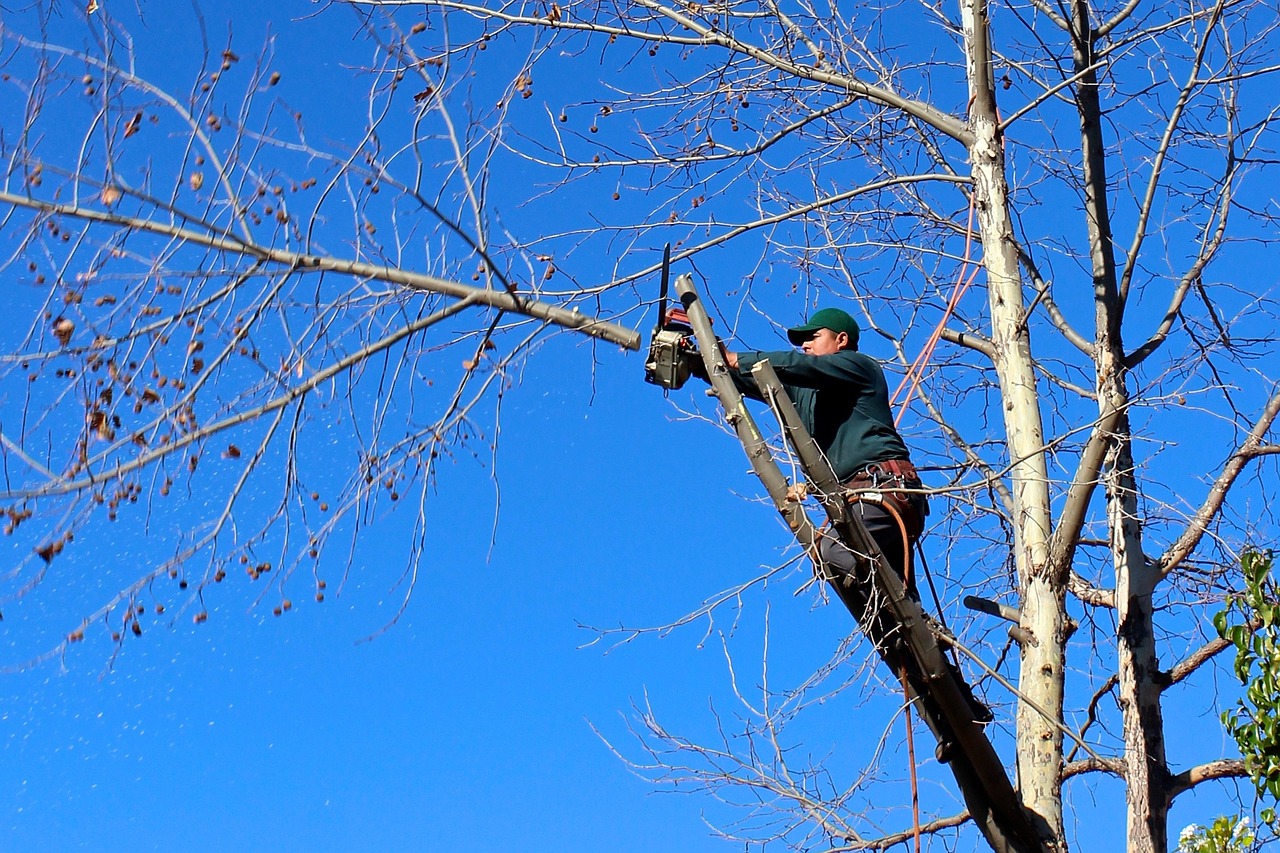Key Takeaways
- Proper pruning benefits trees by increasing light and air penetration, removing dead or diseased branches, and creating a more balanced tree structure.
- Through regular proper pruning tree diseases are prevented, pest infestations are reduced, and trees are equipped to have a stronger defense against environmental challenges.
- This reduces the chance of a branch breaking or falling in a storm or high-wind situation, increasing safety and lowering risk.
- Proper seasonal pruning — late winter for deciduous trees or right after blooming for flowering trees — allows for the most vigorous growth and fastest recovery time.
- Appropriate cuts made with clean, sharp implements, such as thinning or heading cuts, minimize the potential for infection and help trees heal naturally.
- Don’t make common errors such as over-pruning and neglecting wound treatment. Proper pruning timing will save your tree and help it live longer!
Proper pruning helps prevent tree disease and prolongs the life of your trees! By encouraging healthy growth and pruning out weak branches, you keep them strong and safe.
By cutting away dead or infected limbs, you reduce the risk of pests and diseases spreading to the rest of the tree. It helps increase airflow and sunlight exposure, both critical for any tree’s long-term health.
Proper pruning can help avoid structural defects, such as weak branch unions that are more likely to break in storm events creating hazards and damage.
So whatever the age of the tree—from a new sapling to a well-established canopy member—proper pruning makes sure it lives long and healthy for decades.
In this guide, we’ll explore the best pruning practices, tools to use, and tips for keeping your trees healthy and thriving.
Why Pruning Matters For Tree Health
Tree pruning is about much more than cutting back branches. It’s an artful practice that increases the vitality and lifespan of trees. The result of a well-planned pruning operation is a tree that is healthy, vibrant, and beautiful.
This practice is based on the scientific study of tree biology. It is critical to maintain not only the beauty and integrity of our trees but also their environmental value.
Define Proper Tree Pruning
Pruning properly means making cuts with a purpose that leads to better tree development. These cuts, called thinning cuts, remove whole branches to improve air circulation.
In comparison, heading cuts remove most of a branch to encourage dense regrowth. Understanding the biology of each tree species is essential, ensuring no harm is done while targeting branches that hinder growth.
Correct pruning encourages more flowers, fruit, and new branch growth. This approach is particularly useful with trees that have endured an especially hard winter or storm-related damage.
In the long run, this process helps improve the tree’s structural integrity and longevity.
Explain The Importance Of Pruning
Without regular pruning your landscape misses a whole host of benefits. It prevents disease from spreading by cutting out diseased branches and opens up access to sunlight for inner leaves.
It can help trees develop better structures to minimize wind and storm damage. This is particularly so for ones with fragile root systems, like butterfly bushes.
Regular pruning enhances landscape aesthetics, whether by maintaining symmetry or highlighting vibrant foliage. In cities, it cools the air by almost 3 degrees Fahrenheit.
How Pruning Extends Tree Life
Pruning promotes proper nutrient absorption by eliminating roots and branches that compete for nutrients and water and are either dying or decaying. This encourages healthy growth cycles and avoids wood rot.
By keeping a balanced canopy, we increase structural integrity and promote even growth, making trees healthier and more resilient to storms.
Understand The Benefits Of Pruning
Pruning is more than just cutting branches. It’s a science and an art that ensures the health, safety, and beauty of trees. By zeroing in on the proper techniques, you can help protect a tree’s long-term health while beautifying its environment.
Key benefits include:
- Healthier trees with reduced disease risk.
- Improved structural integrity for stronger branches.
- Enhanced aesthetic appeal for landscaping.
- Increased safety by removing hazardous branches.
Pruning For Healthier Trees
Cutting back dead, diseased, or crowded branches is important for a tree’s health. These branches can host fungi or bacteria that can be transmitted to the rest of the tree. In addition to allowing space for structural development, pruning removes crowded branches to optimize both airflow and sun exposure, enhancing foliage density and overall vigor.
Appropriate techniques, such as cutting just above an outward-facing, healthy bud, stimulate new, vigorous growth. One more surprising benefit is pest infestations, as pests are less likely to infest a well-kept tree. Routine care through maintenance pruning not only protects people and property, but it helps trees remain healthy and resilient throughout the year.
Pruning For Structural Integrity
Pruning promotes a stronger branch structure, ideal for developing young trees. Thinning or crown reduction techniques prevent the development of multiple leaders, which is important for maintaining your tree’s stability.
This reduces the occurrence of weak branch angles that are prone to breakage, especially during storms. A thoughtful pruning approach will further help create a well-balanced tree, allowing it to grow more symmetrically and minimize excess stress on the trunk and roots.
Pruning For Safety And Hazard Reduction
Dead or overhanging branches pose safety risks, especially in storms. Removing them reduces the risk of falling and ensures that paths are not obstructed. Together, this keeps our outdoor spaces safe and welcoming to all families and visitors.
When Is The Best Time To Prune?
Pruning at the right time is key for maintaining a tree’s long-term vitality and disease prevention. The specific timing will depend on the type of tree you have, how old it is, and the climate where you live. By understanding seasonal considerations, tree age, and the needs of newly planted trees, you can extend their lifespan and support healthy growth.
Seasonal Pruning Considerations
By pruning during the dormant season, usually late winter, you help prevent infections and disease from taking root. It’s best for deciduous trees, whose sap flow slows at this time, making the cuts less stressful. For evergreens, prune in late spring or early summer, taking no more than one-third of the new growth to control size.
With flowering trees, if you prune after they’ve flowered, it’ll save their next season’s flowers because they tend to bloom on the development of growth from the previous year. Seasonal timing matters, too, when it comes to recovery. Trees pruned during late winter or early spring will heal more quickly as growth takes off.
It all depends on local climate conditions. For instance, in regions with severe winters, late winter would prevent the cuts from being exposed to long periods of extreme cold. Providing a tree’s specific needs vary widely. So be flexible.
Small-flowered, non-fruit-bearing varieties are the same as above but a bit later in spring. If you have fruit trees, late winter is the perfect time to prune them into shape and encourage greater fruit production.
Pruning Based On Tree Age
Young trees require formative pruning to ensure the development of a strong framework. Preventing competing leaders and establishing the tree’s canopy at an early age ensures a more balanced growth. The reality for mature trees is that they need the occasional corrective pruning to remove dead or crowded branches.
Age plays a factor in how much should be pruned—no more than 10-20% of the overall canopy should be removed to prevent overstress.
Pruning After Planting
Upon planting, the first pruning sets the tree’s form and eliminates any undesirable or compromised branches. This initial step lays the groundwork for a strong framework, fosters vigorous competition among leaders, and cultivates vigorous growth.
Giving priority to this kind of early care makes long-term peace of mind possible.
Pruning Techniques For Disease Prevention
Pruning is one of the key practices that directly affects tree health and longevity. Prune with the proper techniques to reduce the incidence of disease. You’ll have an improved and established more resilient tree structure. Below are effective pruning methods to achieve these outcomes:
- Remove dead or diseased branches promptly.
- Make clean and precise cuts to reduce infection risk.
- Promote air circulation to minimize humidity around foliage.
- Encourage sunlight penetration to inhibit fungal growth.
Remove Dead Or Diseased Branches
Dead or diseased branches are breeding grounds for infections that can spread rapidly. Identifying and removing these parts as early as possible is crucial. Make clean cuts with sharpened tools just outside the branch collar to encourage natural healing.
Regular inspections help catch problems before they escalate, ensuring timely action.
Makes Clean and Precise Cuts
Pruning with dull, inappropriate tools can lead to tearing of bark and creation of open wounds. Clean cuts from sharp tools minimize damage, allowing trees to recover more quickly and lowering disease risks.
Plus, always cut at a 45-degree angle so water doesn’t pool, which can cause decay. This precision leaves surrounding tissues less damaged, which is crucial for maintaining long-term health.
Promotes Air Circulation
Dense canopies trap moisture, creating the perfect environment for harmful fungi. Thinning out branches increases airflow, which helps decrease humidity levels.
This makes it harder for diseases such as powdery mildew to develop. Ongoing maintenance is key to providing maximum airflow over time, which is critical for a healthy growth cycle.
Sunlight Penetration
More sunlight getting to inner branches increases photosynthesis, which is critical to energy production. Smart pruning promotes good light penetration, which fosters healthy foliage and minimizes fungal growth.
Creating a balanced light distribution helps to grow a vibrant, disease-resistant tree.
Essential Pruning Tools And Their Care
Safe, effective pruning starts with using the right tools, carefully chosen, and properly cared for. Using the wrong or shoddy tools will not only make it more difficult to prune but also increase the risk of damaging your trees’ health.
See below for a breakdown of the tools you’ll need and how to care for them.
- Pruning shears: Ideal for snipping small branches or stems up to ¾ inch thick.
- Loppers: Designed for thicker limbs, typically up to 2 inches in diameter.
- Pruning saws: Perfect for mature trees with larger branches.
- Pole pruners: These help reach high branches without the need for a ladder.
Choosing The Right Tools
Choosing the right tool will help you work more productively and reduce the risk of damage to trees. Tools are no different. For example, pruning shears are better suited for detail work, whereas loppers are designed for thicker cuts.
Choose ergonomic tools to minimize hand fatigue, particularly during extended pruning tasks. Better tools up front will be more expensive. Treat them as an investment because they’ll last longer and work better.
Maintaining Sharp Tools
Sharp tools make clean cuts that heal quicker, protecting trees from disease. Dull blades do more damage by tearing the branch and leaving jagged edges that are susceptible to infection.
To stay in optimal condition, tools should be sharpened regularly and worked on with a sharpening stone, or a file at the very least. Rust or damage – Always inspect before every use!
Sanitizing Pruning Tools
This is especially important if you have multiple trees, as cleaning tools between cuts is crucial to prevent spreading diseases.
Option two—wash tools in a solution of one part bleach to nine parts water or use rubbing alcohol. You know, for diseased trees, this is not optional.
Keeping your tools clean will not only help protect tree health, but help make sure that your pruning efforts are as effective as possible.
Common Pruning Mistakes To Avoid
While pruning is a basic part of keeping a tree healthy, some common errors can cause more damage than benefit. Avoiding these mistakes will go a long way toward keeping your trees healthy and resistant to disease.
Removing more than one-third of a tree’s canopy can weaken its ability to produce food, leaving it stressed and vulnerable to pests or disease. The branch collar, the swollen area where a branch joins the trunk, is crucial for healing. Too much of a cut or a stub cut will increase the difficulty of recovery and open up the potential for decay.
Sealants and other treatments can be breeding grounds for fungi or bacteria, particularly if moisture is sealed in without a means of escape. Pruning during active growth or late summer can stress the tree while pruning too late in fall can expose new growth to frost damage.
Tree Topping Dangers
Topping, or severely reducing the crown, makes the tree more structurally weak. This can result in messy, spindly regrowth that needs regular follow-up care.
These large wounds, created by topping, invite pests and disease, ultimately jeopardizing the tree’s long-term health. Good pruning prevents these dangers by making slow, precise cuts to the desired area.
Ignoring Branch Collar
It’s vital to preserve the branch collar. Making the cut too close to the trunk can prevent natural healing from occurring.
Taking care to leave the collar intact will facilitate wound closure. Correct cut placement helps prevent decay while encouraging vigorous regrowth.
Improper Wound Treatment
Not allowing wounds to heal or trying too hard to do so can open doors for infections. Trees are incredibly adept at sealing wounds.
The less human intervention, the less chance of decay.
Pruning At The Wrong Time
Cutting during the warmer months, when more pests are out, can infect surrounding trees with disease. Timing varies by species, so understanding seasonal needs prevents stress and ensures healthy growth.
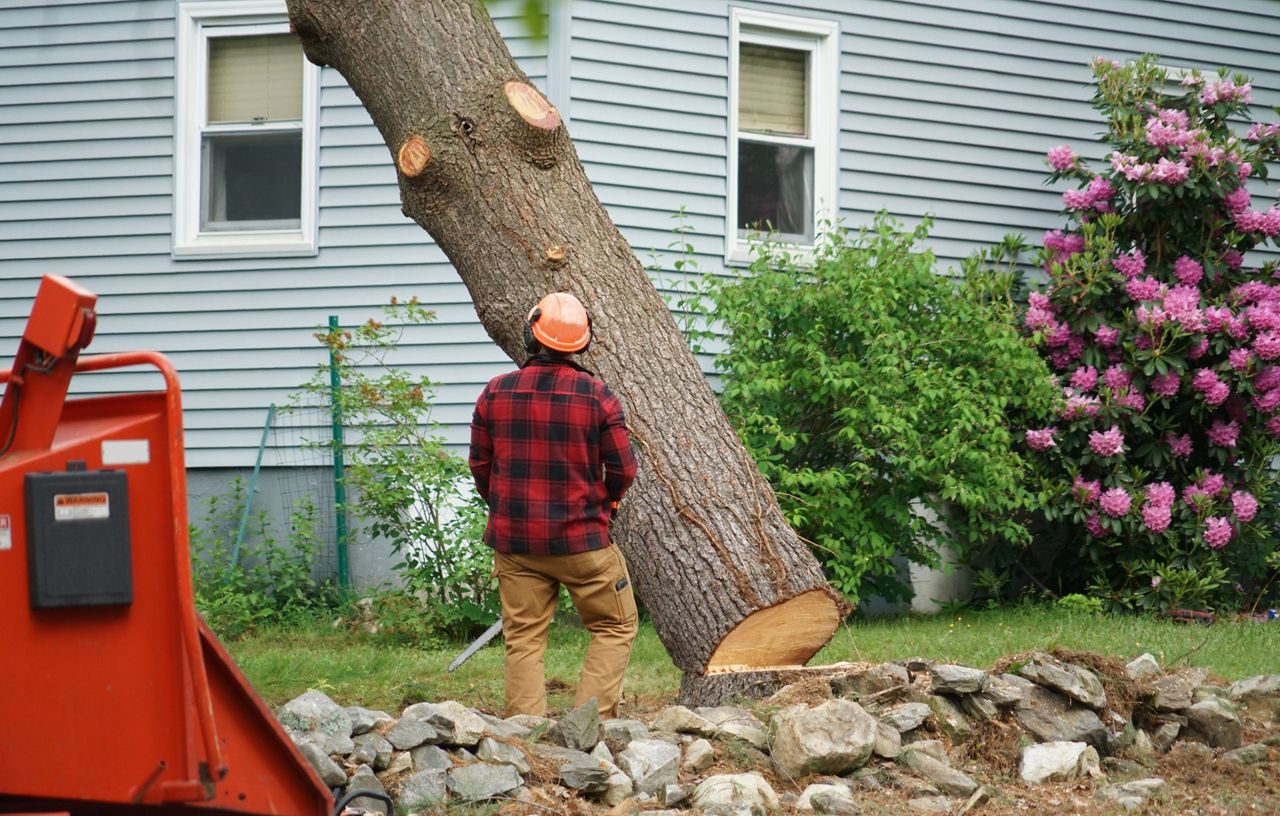
Wound Care After Pruning
Avoiding dieback Proper wound care is the final, but very important piece, to keeping trees healthy after pruning. When properly cared for, pruning wounds can heal quickly, minimize the potential for disease, and encourage long-term plant health. Here are the key considerations:
- Understand that applying wound dressings is a debated practice. Some experts argue they can trap moisture, encouraging fungal growth, while others suggest their benefits vary based on tree species and climate. Evaluate each tree’s condition before deciding.
- Monitor for signs of infection: Periodically check all pruning sites for signs of infection, like darkening, oozing sap, or other abnormal growths. Advocacy point Early detection lets us intervene early, before patients/clients need complex care.
- Trees develop compartmentalization of wounds with callus formation and woundwood growth, which act as barriers to pathogens. For example, CODIT (Compartmentalization of Decay in Trees) explains how trees form walls around decay to protect healthy tissue.
- Avoid excessive interference with the wound: Over-treating wounds can disrupt this natural process. For instance, cuts that are not made correctly or too much pruning will delay recovery.
Should You Use Wound Dressings?
Whether or not to implement wound dressings is a contextual decision. While some arborists recommend avoiding them to support natural healing, others might suggest them for specific cases, such as exposure to harsh environments.
Regardless, wound management is far more important than dressing. Wound care after pruning… Techniques such as collar cuts encourage the fastest callusing, a boon when pruning just before spring leaf-out.
Natural Wound Healing Process
As with any injury, trees begin to heal by forming callus tissue and wound wood patterns that create protective covers. We have learned, for example, that a collar cut makes it possible for the wound to close quickly without jeopardizing the tree’s structural integrity.
Patience is key, as healing will take time and differ by species and wound size.
Species-Specific Pruning Considerations
Trees are incredibly diverse in their growth habits, seasonal cycles, and overall needs, so no pruning technique is universal. To encourage robust development, pay special attention to the requirements of the species you’re nurturing. This species-specific approach will further contribute by addressing the risks of disease.
Timing is crucial in the pruning process. In most climates, the ideal time to prune is in late winter – when trees are dormant. This window of time minimizes stress onto the plant and heals pruning cuts before the spring push. For species like oak and maple trees, this approach is ideal as it helps keep their natural structure intact and avoids issues with overgrowth.
Summer pruning is best for shaping. Pines and spruces are examples of trees that grow continuously throughout the year. That said, don’t over-prune, as these trees do not replace their needles the way deciduous trees do. Prune immediately after blooming to safeguard the flowers of the following year. For example, cherries and magnolias form buds shortly after flowering, so pruning too late will cut off the next set of flowers.
Each species has unique needs. Understanding these will go a long way to providing healthier trees with longer lifespans.
Deciduous VS. Evergreen Trees
With deciduous trees dropping their leaves each year, dormant pruning is perfect for directing the tree to a balanced growth form. Because their growth patterns are very vigorous in the spring, timely cuts can help to direct the plant’s energy to the right areas.
Evergreens, conversely, keep their foliage year-round and have slower growth rates. Properly pruning them can go a long way to preserving shape without stunting their growth.
Species-specific considerations are essential. Seasonal timing is key—putting the wrong cuts where they require increasing stress on trees and/or exposing them to pest pathogens.
Understanding Tree-Specific Needs
Take, for example, maple versus oak. Learn which species you’re working on to inform your pruning—soil type, climate, and growth rate all play into care. Southern live oaks do better with minimal routine pruning in hot, humid climates.
In comparison, desert mesquite trees thrive when lightly pruned due to the dry environment. Species-specific consideration tailored pruning not only bolsters resilience, but plant longevity.
How Pruning Boosts Tree Defenses
Proper pruning is one of the most important factors in ensuring long-term tree health and vitality. By eliminating weak or crossing branches and directing growth in the right way, it maximizes a tree’s natural ability to defend itself against disease, pests, and other environmental stresses. With proper pruning, trees will remain healthy and better able to withstand stress, so pruning should be a vital part of any tree management program.
Pruning promotes stronger nutrient and energy circulation to the healthier, more vigorous branches. It boosts the tree’s ability to fend off pests and pathogens. Additionally, pruning helps to strengthen defenses against environmental stress by enhancing form and structure. This practice also increases defense against storm stressors.
Enhancing Nutrient Flow
Pruning allows a tree owner to redirect a tree’s nutrient stores to the healthiest, most vital parts of the tree. Removing weak or dead branches prevents unnecessary resource expenditure, ensuring that critical areas like the canopy and trunk receive adequate support.
Photosynthesis benefits directly when healthy foliage is prioritized, as sunlight reaches active leaves more effectively. For instance, selectively removing overcrowded branches lets in more sunlight, increasing energy production. Frequent and careful evaluation is necessary to rectify any such imbalances in available nutrients, particularly during a tree’s early development.
Strengthening Natural Defenses
A tree that has received proper pruning is much better suited to fend off pathogens. By eliminating branches that have the potential to be diseased or pest-infested, pruning lessens the risk and stops the spread from occurring.
Vigorous growth, enhanced through intentional pruning, strengthens a mature tree’s defenses against possible threats. Maintaining a strong and healthy root system keeps the tree anchored firmly in place. Proactive pruning, which keeps trees healthy and in good growing form, decreases the chance of future health issues developing.
Mitigating Environmental Stress
Environmental stress like strong winds or heavy storms can put a lot of stress on trees. Pruning addresses these risks by removing excess weight, providing structural balance with a lower center of gravity, and reducing wind loading effects.
One example is over-thinning dense crowns to increase their ability to survive in gusty conditions. Leaving trees with space between the canopy allows winds to pass through and reduces resistance. For instance, don’t prune too near frost dates to avoid inducing physiological stress.
By following tree care best practices, pruning helps trees weather the storm.
Conclusion
Proper pruning is one of the most important factors in maintaining vibrant, sustainable trees.
Preventing disease Tree pruning is essential in preventing disease, promoting growth, and extending a tree’s lifespan. Proper tools, proper technique, and proper timing can mean the world. Ongoing maintenance, such as proper seasonal pruning and sterilization of tools, prevents issues from arising. Don’t prune too heavily or let wounds grow in without treatment. These actions can stress and damage the tree. Each tree species can require a slightly different approach, and if you know what works best, it makes a huge difference.
Healthy trees mean a healthier yard and environment. Proper tree pruning doesn’t just happen; it takes time. Take the time to care for your trees, and in return, they’ll provide beauty and benefits for generations to come.
Frequently Asked Questions
1. Why Is Pruning Important For Tree Health?
Proper pruning allows the tree to remove dead or diseased branches, improving airflow and sunlight penetration. This helps prevent disease and insect infestation, leading to more robust and healthy development.
2. When Is The Best Time To Prune Trees?
The optimal time to prune most trees is in late winter or early spring before the tree starts producing new growth. This allows the tree to seal off the wound much more effectively, preventing increased exposure to pathogens and disease.
3. Can Pruning Prevent Tree Diseases?
The right pruning eliminates compromised branches so that disease can’t spread as easily. It opens up the crown to increase airflow, preventing conditions that encourage fungal growth and other diseases.
4. What Are Essential Pruning Tools?
The main tools needed are hand pruning shears, loppers, a hand pruning saw, and a pole pruner. Proper sanitation is key. Once you know what and how to prune, it’s time to think about tools.
5. How Can Pruning Extend A Tree’s Life?
Proper pruning will help remove the deadwood, encouraging healthy growth and preventing future structural problems. This makes the tree more storm- and pest-resistant, thus increasing its life expectancy.
6. What Are Common Pruning Mistakes To Avoid?
Don’t over-prune, don’t top trees, and don’t cut too close to the trunk. These missteps can over-stress the tree, welcome disease, and undermine its structural integrity.
7. Should I Treat Tree Wounds After Pruning?
Wound care is not always warranted or helpful. While most trees heal on their own, do not apply wound sealants. Make proper cuts so injuries are as small as possible.
Protect Your Landscape With JC Tree Service’s Expert Tree Disease Solutions
If tree disease is threatening the health and beauty of your property, JC Tree Service is here to help. Whether you’ve noticed discolored leaves, brittle branches, or unusual growths, our expert team can diagnose and treat a variety of tree diseases. From targeted treatments to full tree removal when necessary, we provide comprehensive tree care solutions in Brentwood, Antioch, and surrounding areas.
Tree disease can spread quickly, weakening your trees and posing risks to your landscape. Early intervention is key to preventing further damage. At JC Tree Service, we tailor our treatments to the specific needs of your trees, helping to restore their health and vitality. Our expert care not only preserves the natural beauty of your property but also prevents potential hazards like falling limbs and decay-related structural issues.
Don’t let tree disease compromise the safety and aesthetics of your outdoor space. Contact JC Tree Service today for professional diagnosis and treatment. We offer a free, no-obligation quote to help you get started. Let us protect and preserve the trees that make your landscape thrive!
Disclaimer
The materials available on this website are for informational and entertainment purposes only and not to provide legal or professional advice. You should contact your attorney or home improvement specialist to obtain advice concerning any particular issue or problem. You should not act or refrain from acting based on any content included in this site without seeking legal or other professional advice. The information presented on this website may not reflect the most current home improvement developments. No action should be taken in reliance on the information on this website. We disclaim all liability concerning actions taken or not taken based on any or all of the contents of this site to the fullest extent permitted by law.
